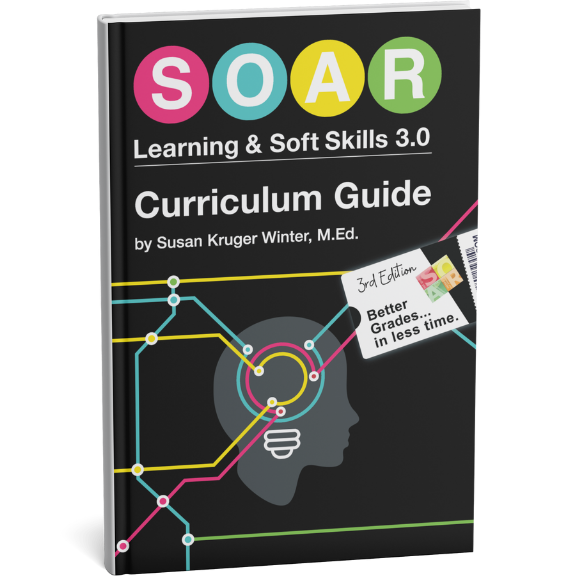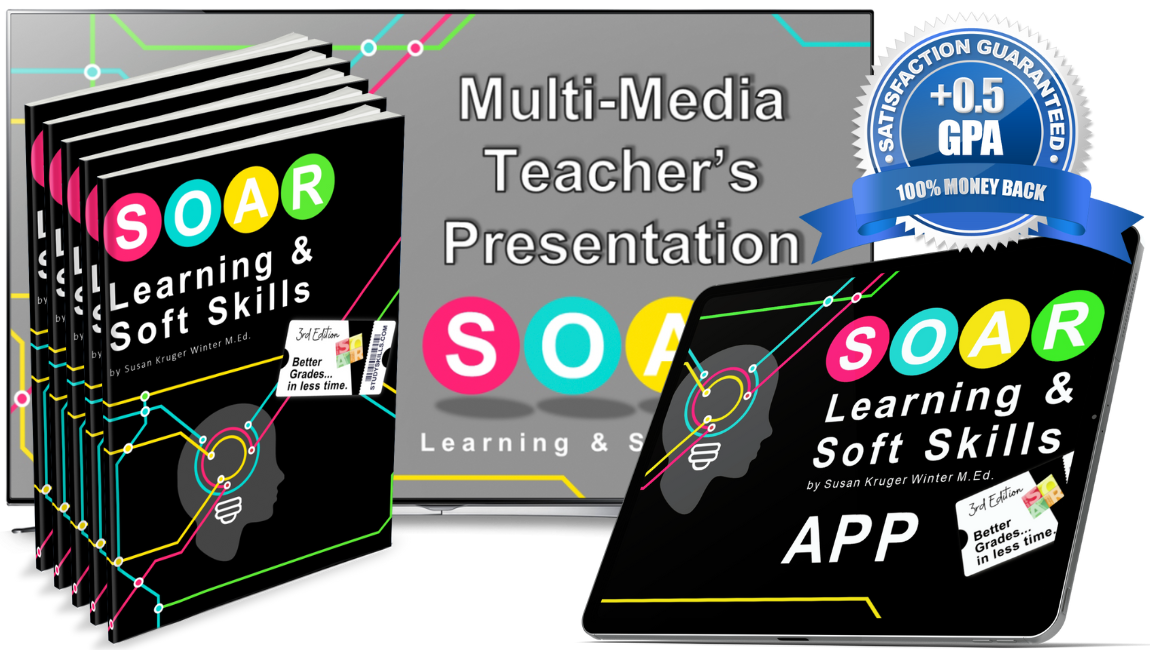“The Cue to Reading” Series (Article 9): Strategies for the Three Cueing Systems – Part II
As promised last week, I will share effective strategies for the remaining two cueing systems today. However, I’d like to begin with a story about a powerful way to support struggling readers…that I discovered by accident.
Several years ago, I had a third-grade student, Emilia (name changed) who had very few reading skills. She could identify letters, but not words. When looking at a sentence, she could not tell where the individual words began and ended.
Emilia did not qualify for special education because her IQ matched her performance. In other words, she was performing as well as “expected,” so she did not qualify for additional support. That left it up to me…and I had no idea how I was going to help her. After a few weeks, however, a plan evolved.
That year, I was piloting a balanced literacy program for my district. The books came with audiotapes and “companion stories.” The companion stories were shorter retellings of the books and written at a lower level; they were designed to be “stepping stones” to the main books.
Every Monday, I began reading workshop with a read-aloud from this program. The students read along with their own copy of the books. During this time, I watched Emilia. She would attempt to track the text with her finder to follow along as I read aloud, but her finger wandered aimlessly around the page. She was totally lost!
One Friday, I invited her to the listening center and asked if she would like to listen to next week’s story on audiotape. She was thrilled and threw on a pair of headphones! Instantly, she was drawn into the story and clearly enjoyed being in her own world for a while.
The following Monday, she was much more engaged in our class discussion and actually answered a couple questions. This was a first for Emilia! Her enthusiasm had been sparked and I wanted to keep it lit, so I told her she could listen to the story as many times as she wanted during reading workshop. She was elated!
The next day, I pulled a small group of students together to practice reading the companion story. Emilia’s reading level was much, much lower than even my lowest reading group. This time, however, I invited her to join us. She sat quietly and “read” along with the others. I did not know if she was learning anything at this point, but she was clearly feeling more positive, which was encouraging!
So, we continued this routine. On Fridays, she helped herself to the listening center and listened to the book we would be reading the following Monday. On Mondays, she joined the whole class read-aloud and discussion. Throughout the week, Emilia would listen to the same story on audiotape at least 4-5 more times. She also joined more and more small group sessions with me. For the first few months, she was perfectly quiet, but very eager. Then, slowly, she began to read a few words aloud. One day, the other students in the group actually cheered for her! It was a wonderful sign of progress.
By the time Emilia left third-grade, her reading level was a 2.5 (middle second grade) with solid comprehension. This was quite an accomplishment when she hardly had the literacy skills of a preschooler at the beginning of the year! Emilia also proved than an IQ is only an indicator. It should never be considered a ceiling for a child. Everyone has great potential, if given the right tools.
While I did additional small interventions with Emilia, I whole-heartedly believe that the repeated readings were the most significant factor in Emilia’s growth. Audiobooks were a perfect tool because she could do the repeated readings independently, without having to wait for adult assistance. Also, reading by herself with the audiotape removed the sense of pressure that comes from being under constant supervision.
Emilia relished the opportunity to read the stories multiple times because she could focus on different things each time. Sometimes she could focus simply on the meaning of the story, other times she could concentrate on identifying and decoding words. Every reading helped her dig deeper into the meaning of the story and blend her comprehension together with the print on the page. This strategy helped Emilia develop all three cueing systems fluidly, at her own pace, and according to what she naturally needed. It can be a powerful element of any reading intervention process.
Of course, now we need to get back to the strategies for other cueing systems.
Syntax/Grammar Cueing System
It can be difficult to identify when students are using the syntax/grammar system in their reading. It often looks like one of the other cueing systems when doing a miscue analysis. As you might guess, however, Emilia has already illustrated one of the best ways to develop syntax skills.
Read-alouds, audiobooks, and repeated readings. Developing a sense of syntax in reading is an art form. It is about internalizing the rhythm of what “good reading” sounds like. This process is the same as learning oral language, but writing has a very different tempo. Just as my two-year-old daughter is learning how to speak by imitating the people around her, developing readers learn the cadence of reading through imitation.
Read-alouds and audiobooks expose students to good models of reading. Cloze procedure. Do you remember “Mad Libs;” the zany tablets with templates where you would blindly insert different parts of speech to create silly stories? The cloze procedure is similar, but without the silliness. It is a technique where specific words are deleted from a passage. Students “fill in the blank” using context clues to determine what word(s) would make sense. This strategy is good for students who overuse the visual cueing system because it forces them to use the other systems to determine meaning.
Visual/Decoding
This is the area I have been working on all summer with my son, so I have had a vested interest in this topic! Students who show excessive struggle with decoding may likely be dealing with a deficiency of working memory, often known as dyslexia.
Working memory is a “section” of short-term memory. It is the “holding place” where our brains: store information in few-second increments, coordinate that information with other input (images, languages, cueing systems), and manipulates all of it together. Working memory can be compared to the RAM on a computer. We know what happens when our computers have exceeded their RAM…they get slow and sluggish. The same thing happens to a brain with a deficiency of working memory.
The visual cueing system is much more susceptible to a deficiency in working memory because this system is based solely on symbols. The brain must first process the visual symbols, then translate them to letters, then translate them to sounds, and finally, translate the sounds to words. This is a multi-step process that can drain the RAM of a brain with low working memory.
Effective strategies for building visual/decoding skills include:
- Multi-sensory, systematic lessons. There are two multi-sensory approaches that are widely used to help struggling readers with decoding: Orton-Gillingham and Lindamood-Bell. Both programs came highly recommended by the specialists who diagnosed Mark with dyslexia. I am not personally familiar with Lindamood-Bell, but I am very familiar with Orton-Gillingham (OG).
I was trained in the system several years ago; the training was over 30 hours long and cost $2500. (Fortunately for me, I got the training for free while working for an OG tutoring center.) I enjoyed the multi-sensory approach and saw great value in the system. However, the supplies were very cumbersome and included several three-inch binders and several other books; all of which have been in the same large storage bin in my basement since the day I came home from that training. If I had to teach OG tomorrow, I would not know where to get started. It was very overwhelming!
However, two years ago, I was introduced to an OG program that has been brilliantly simplified! It is called All About Spelling. Oddly enough, a software salesperson told me about them; they were one of his clients, too. At the time, I never dreamed Mark would have dyslexia, but as soon as I recognized a decoding issue, I purchased the All About Spelling program. I knew it was exactly what he needed.
All About Spelling is a manageable way to teach spelling and decoding using the OG process. It includes the step-by-step instructions and “multi-sensory” lessons that are cornerstone to the OG method. Since the program is so thorough and well organized, our college-aged babysitter is tutoring Mark with the program. She does not have any training in reading or education, but she is able to facilitate the lessons with no problem and Mark is doing very well! For more information, visit All About Spelling.
- Read-alouds, audiobooks, and repeated readings. I already mentioned this strategy a lot today. I am simply mentioning it again so it is listed under this category and not overlooked as an effective option for students who need help with the decoding/visual system.
- Handwriting. Handwriting, in and of itself, does not build reading skills. However, lots of guided practice is a great way to stretch the capacity of the working memory. Also, systematic teaching of handwriting (when letter formations are taught in relation to one another, rather than as 52 individual shapes for upper and lower-case letters) will reduce the burden on working memory when students have to do reading and writing tasks together.Handwriting also correlates with OG instruction because it is one of many multi-sensory ways students can practice new decoding and spelling skills. For more information on the importance of teaching handwriting, see my article and accompanying video on the topic.
This concludes a simple, yet through look at ways you can help struggling readers develop specific cueing systems. Obviously, it is best to first assess where they need support, then target those specific areas.
Next week, we will discuss important considerations for creating effective lessons or tutoring sessions for students. In this case, “more” is not always better. We will look at ways to keep things time-efficient, yet very effective…especially for students with LD/ADHD.
-Susan Kruger
EB 082217
Six Steps
Conquer the Chaos
Get Our Free Guide & Information on...
 How to Organize & Motivate Students for Success
How to Organize & Motivate Students for Success
"*" indicates required fields
Get Our FREE Curriculum Guide!
The SOAR® Curriculum
The most critical learning, organizing, and communication skills needed for school. Learn more here.
Who’s Using SOAR®?
SOAR® Guarantee
Click here to learn more.




